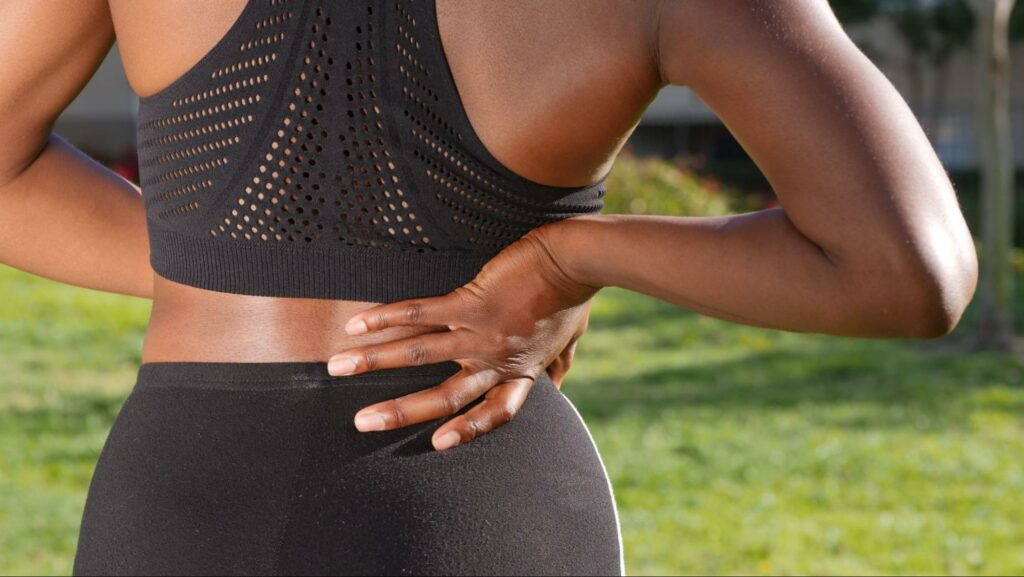Become a subscriber
Join our mailing list to discover new ways to optimize your health, feel incredible, and live longer
In the pursuit of the perfect, luminous, or age-defying skin, it’s easy to fall into the trap of the latest skincare obsessions. But just because it’s trending doesn’t mean it’s good for your skin. So, exactly how do you protect your skin barrier, and how do you rebuild it if the damage is done? Here’s what you need to know.
Table of Contents
2. Why Is the Skin Barrier Important?
3. Factors That Can Affect Your Skin Barrier
4. Protecting and Nourishing Your Skin Barrier
5. How to Repair A Damaged Skin Barrier
6. Does Your Skin Barrier Heal Itself?
7. A Simplified and Gentle Skin Barrier-Rebuilding Routine
8. Simplifying Skin Health with SRx
What Is the Skin Barrier?
In simple terms, the skin barrier is the outermost layer of your skin. It’s this layer of your skin that comes into contact with your surrounding environment. It guards against harmful elements and protects you from fluid loss.
The skin is composed of three layers:
- Epidermis (topmost)
- Dermis (middle layer)
- Subcutaneous (fatty layer)
The epidermis is a dynamic, self-renewing tissue. On the surface of the epidermis is a layer of dead, dry cells called the stratum corneum. This layer of cells is also known as the skin barrier. You can think of it as a brick wall. The bricks are composed of corneocytes anchored together by mortar-like adhesion proteins.
All corneocytes start as keratin and are produced in the lower skin layers. Keratin is a fibrous, insoluble protein. It gives strength and structure to skin, nails, and hair. As keratinocytes move to the skin surface, they undergo many changes in structure and composition.
In their last stage of transformation, keratinocytes mature into corneocytes. At this point, they develop a tough, rigid envelope surrounded by a protective plasma membrane made of cholesterol, fatty acids, and ceramides.
Aside from giving your skin barrier a strong, water-resistant structure, corneocytes also secrete natural moisturizing factors (NMFs). NMFs absorb water from the atmosphere to keep your skin hydrated.
Why Is the Skin Barrier Important?
The skin barrier is structurally and functionally diverse, and its tough exterior is what makes it an indispensable shield against external aggressors. For example, it’s the first line of defence against UV radiation, injuries, and infections.
By keeping the skin surface acidic, NMFs, fatty acids, and other enzymes help the skin barrier protect against infections. Moreover, it contains antimicrobial peptides, which are proteins with antibiotic-like properties. Combined with regular skin shedding, pathogens rarely get enough foothold to infect.
But perhaps the most important function of this outer layer of the skin lies in preventing excess water loss. In fact, many experts use transepidermal water loss (TEWL) to assess skin barrier health. TEWL is a process in which water passively crosses the epidermis and evaporates into the air. While TEWL is a normal process, excessive water loss can dehydrate your skin.
Factors That Can Affect Your Skin Barrier
Your skin is strong and adaptable, but it can only take so much. Here are factors that can prove to be detrimental.
Aging. As you age, your cells slowly lose the ability to reproduce and rebuild. With this comes a decline in your cells’ ability to produce natural oils.
Cold, dry winters. Harsh and cold weather draws out moisture from your skin. Failing to replace lost moisture can cause your skin barrier to crack and let irritants in.
Over-exfoliation. Overly frequent exfoliation with high-concentration products is among the most common causes of barrier damage.
Exfoliation can be useful when done in moderation. It increases cell turnover. This means that it speeds up the skin shedding process, replacing dull, dry cells with fresh, vibrant ones faster.
But overdoing it can impair skin cell maturation. Over time, the skin barrier becomes weak and prone to injury. Over-exfoliation can also break the mortar that holds the skin cells together, leaving it vulnerable to irritants and dehydration.
Other factors include:
- Aggressive cleaning, rubbing, and scrubbing can cause micro-abrasions and cracks on your skin barrier
- Deficiency in zinc, essential fatty acids, and vitamins A, B3, B7, and D
- Immune dysfunction can cause your immune system to attack the cells in your skin
- Excessive sun exposure can dry out your skin
- Excessive bathing and use of soaps can strip out skin oils
- Microvascular diseases like uncontrolled diabetes can disrupt blood flow to the skin
- Kidney disease causes toxins to accumulate in your skin
- Medications like diuretics can cause water loss and dehydration
- Long-term steroid use can impair the production of fatty acids essential to the integrity of the skin barrier
- Epidermis (topmost)
- Epidermis (topmost)
Signs of a Compromised Skin Barrier
It’s hard to miss the signs of a damaged skin barrier. More often than not, it starts with dryness. Dry skin looks red, flaky, and cracked. The cracks may accentuate your natural skin lines, and your skin may feel rough, tight, and itchy.
If the dryness worsens, cracks may extend and form fissures, providing a suitable entry point for infections. Depending on the depth of the fissures, there could be capillary involvement and bleeding. From here, it can progress to eczema.


Protecting and Nourishing Your Skin Barrier
Your skin barrier goes through a lot to protect you ‘round the clock. How do you nourish your skin so it can continue fulfilling its purpose?
Be Gentle
The key to protecting your skin is to be gentle with it.
- Avoid long hot baths—shower with lukewarm or tepid water so as not to melt away your skin’s natural oils.
- Don’t use cold water, either, as it can dry out your skin oils.
- Avoid scrubs of any kind.
- Limit the use of harsh soaps, especially those with sodium lauryl sulphate.
- Use a gentle, fragrance-free cleanser.
- Pat your skin dry with a soft towel.
Don’t Overdo the Exfoliation
Most people with healthy skin don’t need to exfoliate. If you have oily and acne-prone skin, you can get away with exfoliating once or twice a week. However, those with sensitive skin are advised to avoid exfoliating altogether.
If you really want to exfoliate, choose a gentle exfoliant. Papaya and pumpkin enzymes are deep-acting yet gentle and non-abrasive. Meanwhile, lactic acid exfoliates and moisturizes at the same time.
Avoid products containing glycolic acid, salicylic acid, and retinol. Cleansers with exfoliating beads are also a no-go.
Use Sunscreen
Although your skin barrier protects against UV rays, it’s still necessary to protect it from UV exposure. Choose a daily sunscreen with an SPF of at least 15. Lather it on your skin before going out and reapply every two hours.


How to Repair A Damaged Skin Barrier
1. Find the root cause.
The first step in repairing your skin barrier is to consult with a board-certified dermatologist so you can get the right diagnosis. A dermatologist can help you pinpoint the issues that are harming your skin. Once you’ve identified these issues, you can start eliminating them, and your dermatologist can customize a treatment plan for you.
2. Stop exfoliating.
If your skin barrier is compromised, it’s important to give it time to rebuild naturally. To support your skin’s natural healing capacity, stop using exfoliants for at least two weeks.
3. Moisturize and hydrate.
Barring any underlying medical condition, skin barrier repair generally involves moisture replacement. Look for ingredients that mimic your natural skin oils.
- Topical ceramides help your skin hold onto moisture. The application of ceramides has been found to increase skin hydration and improve barrier function.
- Glycerin and hyaluronic acid are humectants. They pull water from the environment and retain moisture.
- Moisturizers like lanolin, petroleum jelly, squalane, and shea butter create a protective barrier that locks in moisture.
4. Nourish your skin from within.
Your skin uses dietary nutrients to maintain a healthy structure and function. To help your skin barrier rebuild itself, you need to up your intake of specific nutrients that your skin can use. A few important nutrients are:
- Vitamin A plays a role in keratinocyte reproduction and maintaining your skin’s immunity.
- Vitamin B3 (nicotinamide) stimulates the production of ceramides.
- Vitamin B7 (biotin) plays a key role in keratin production and maturation.
- Vitamin D is important in the maturation of skin cells and the production of NMFs.
- Essential fatty acids are critical in the formation of the cell membrane that holds your skin barrier together.
Healthy people can generally get all the nutrients they need from their diet. However, some people may not process dietary nutrients well and may need skin supplements. Nutrigenomics can help you understand how your genes affect the way your body interacts with nutrients.
5. Don’t forget your sunscreen.
Sunscreen should be a mainstay in your daily skincare routine with or without skin barrier damage.
6. Keep your routine simple and gentle.
When your skin feels like ground zero, it can be tempting to try every trending skincare product. At this time, it’s best to leave your skin some space to do its own healing. This means:
- Staying away from harsh skincare products like vitamin C serums and chemical exfoliants.
- Treating your skin delicately by not scrubbing, waxing, and overwashing.
- Limiting shower time to a maximum of 10 minutes.
- Using lukewarm water to wash your skin.
7. Mind your skin pH.
A healthy skin barrier maintains a slightly acidic pH. Any deviation from that can throw the skin ecosystem off and may encourage bacterial growth or cause inflammation. To maintain your skin pH, use products that are labeled “pH balanced.” Taking probiotic supplements may also help restore your skin barrier’s normal pH level.
Does Your Skin Barrier Heal Itself?
The skin barrier can renew if given the space and the right resources for healing. How long it takes will depend on the extent of the damage and how well you take care of your skin.
Your skin barrier sheds and renews every 28 days. So, if you caught the damage in the early stages, you can expect improvements after 28 days of changing your skincare routine. Barrier damage that has progressed to eczema takes longer to repair.
A Simplified and Gentle Skin Barrier-Rebuilding Routine
In case you’re still unsure of what a simple and gentle routine looks like, here’s an example:
Morning Routine
- Gently wash your face with lukewarm water.
- Apply a moisturizer with barrier-building ingredients like ceramides and hyaluronic acid. If you’re prone to sweating, use an occlusive moisturizer.
- Apply sunscreen.
Night Time Routine
- Wash your face with a gentle, fragrance-free cleanser to remove makeup and sunscreen.
- Moisturize.
Simplifying Skin Health with SRx
At SRx, we not only understand the importance and the advantages of simplifying skincare; we also practice it. With our integrated network of health practitioners, dermatologists, compounding capabilities, and specialty pharmacies, we offer our patients a seamless skincare experience and customizable solutions.
Find a location near you and reach out to learn more about our current and upcoming services.




